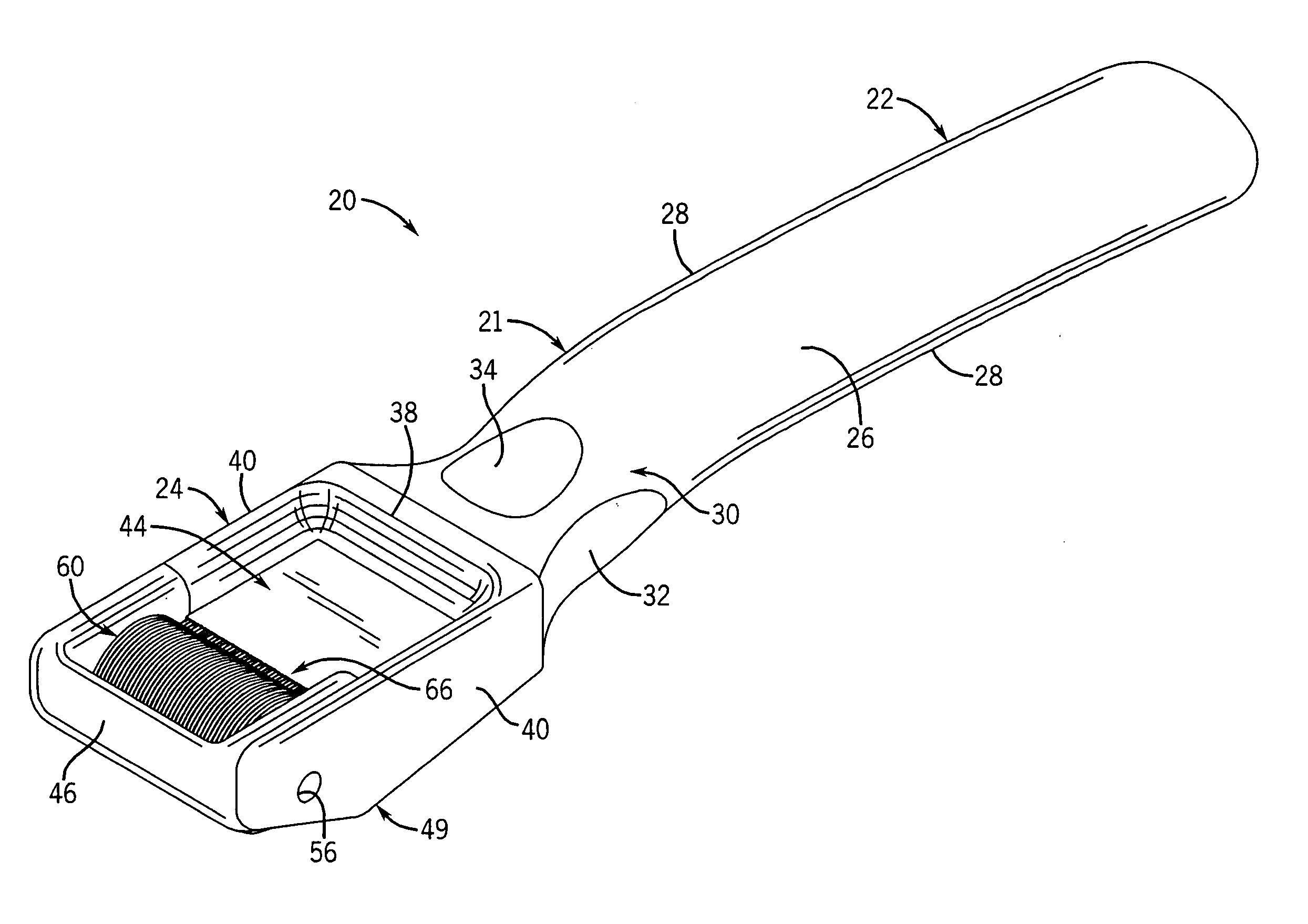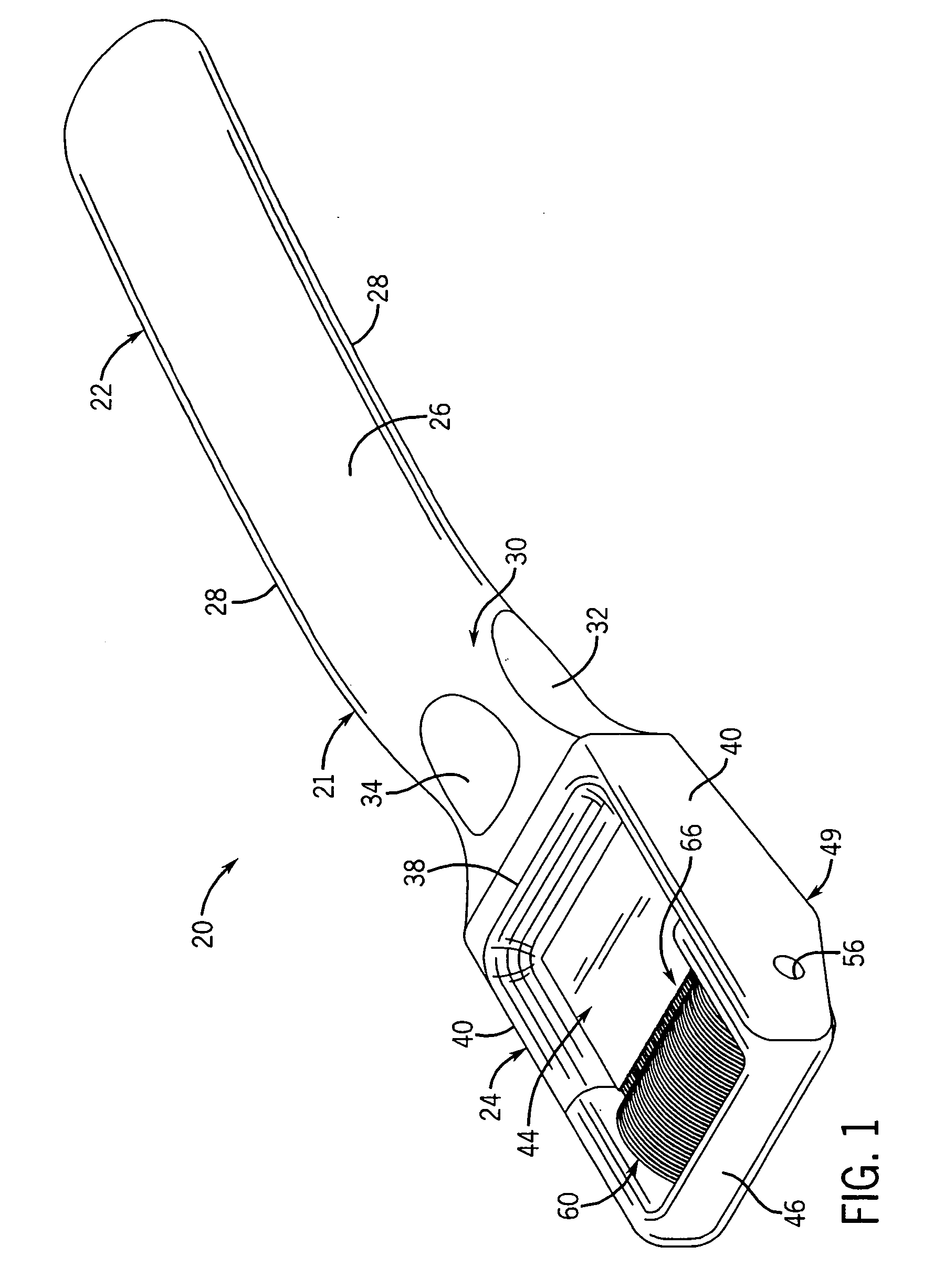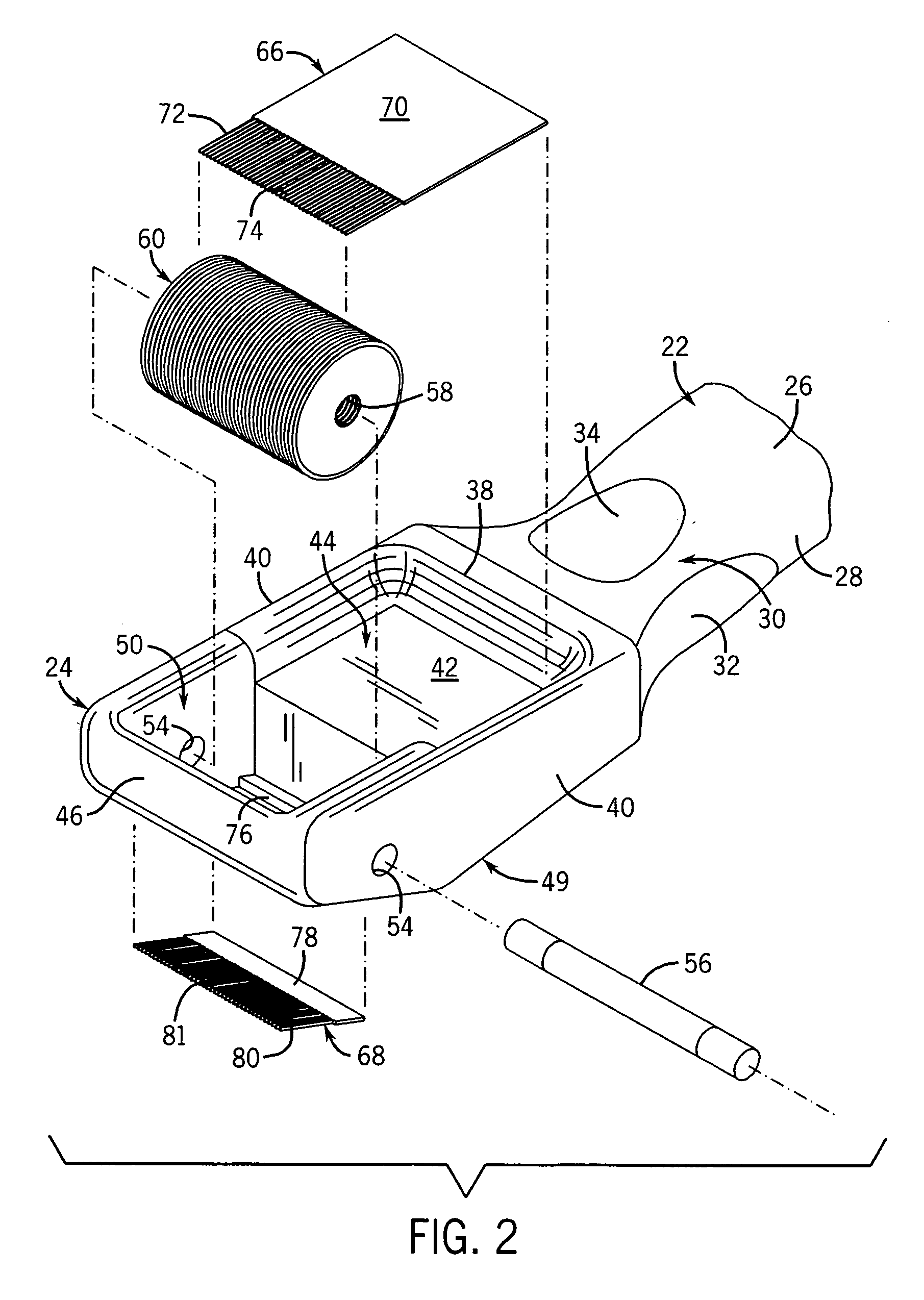Method and apparatus for processing dermal tissue
a dermal tissue and processing method technology, applied in the field of dermal tissue processing methods and apparatuses, can solve the problems of poor cosmetic results, uneven surface of healed wounds, and accumulation of particles in the interstices between adjacent blades, and achieve the effects of reducing the number of surgical procedures, and improving the quality of surgical procedures
- Summary
- Abstract
- Description
- Claims
- Application Information
AI Technical Summary
Benefits of technology
Problems solved by technology
Method used
Image
Examples
Embodiment Construction
[0038] Referring to FIG. 1, a disposable, handheld device 20 for processing harvested dermal tissue includes a housing 21 presenting a substantially horizontally extending handle 22 and an interconnecting cutting head 24 extending forwardly from the handle. Handle 22 and cutting head 24 extend generally in the same plane, and are preferably formed from a plastic that is molded as an integral frame. Unless stated otherwise, device 20 can be formed from any suitable plastic, and is preferably injection or otherwise molded.
[0039] Handle 22 defines an upper end 26, a lower end (not shown) opposite the upper end, and opposing sides 28. Handle 22 defines a necked-down gripping portion 30 at a location proximal the interface with cutting head 24. A pair of side cutouts 32 are formed in opposing sides 28, and a third cutout 34 is formed in the upper end 26. Cutouts 32 and 34 are substantially aligned, and ergonomically sized and shaped to be comfortably engaged by a user's thumb and other ...
PUM
 Login to View More
Login to View More Abstract
Description
Claims
Application Information
 Login to View More
Login to View More - R&D
- Intellectual Property
- Life Sciences
- Materials
- Tech Scout
- Unparalleled Data Quality
- Higher Quality Content
- 60% Fewer Hallucinations
Browse by: Latest US Patents, China's latest patents, Technical Efficacy Thesaurus, Application Domain, Technology Topic, Popular Technical Reports.
© 2025 PatSnap. All rights reserved.Legal|Privacy policy|Modern Slavery Act Transparency Statement|Sitemap|About US| Contact US: help@patsnap.com



